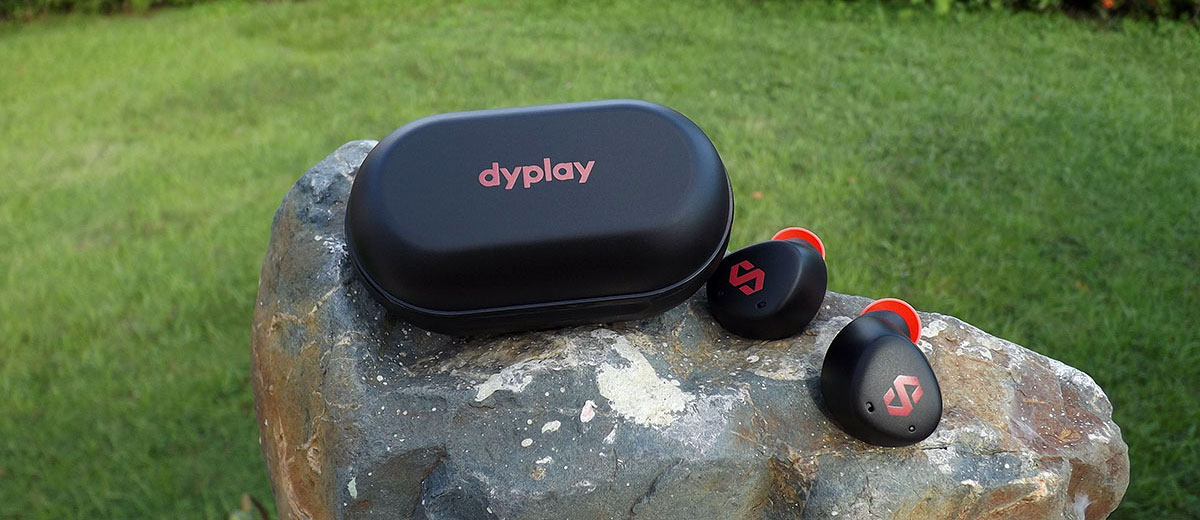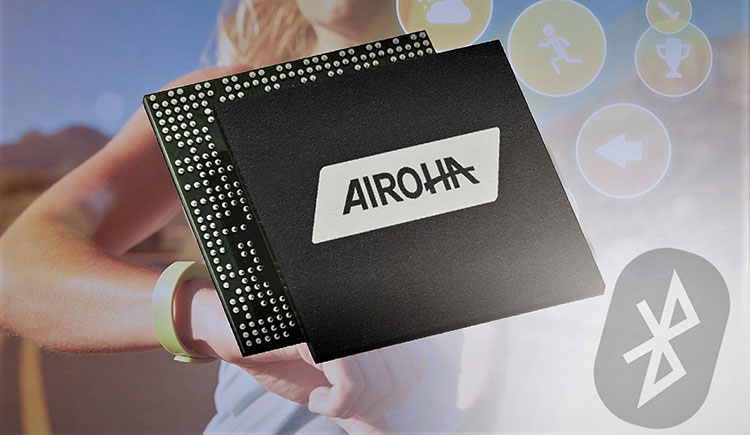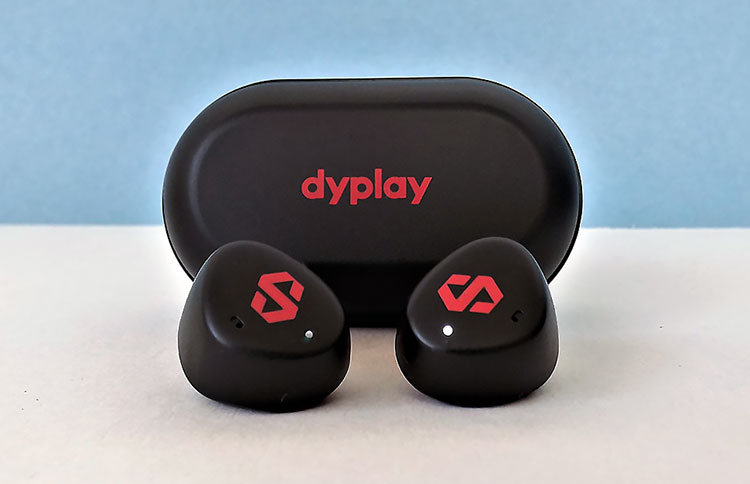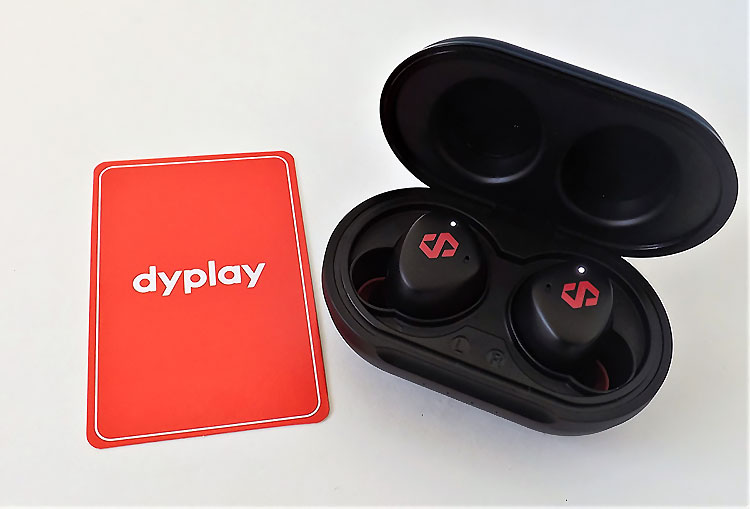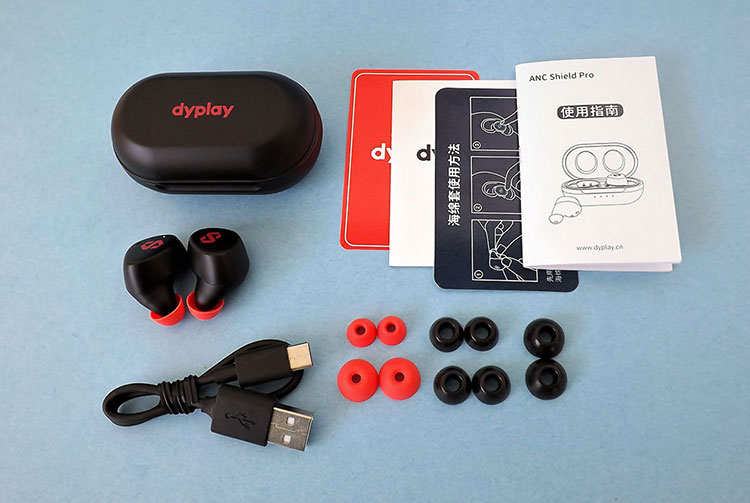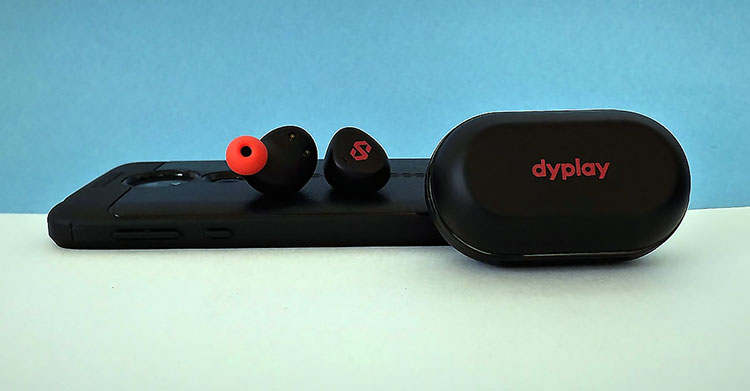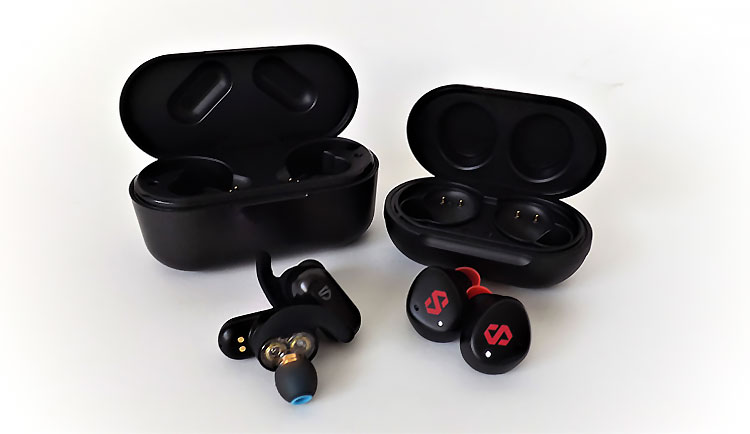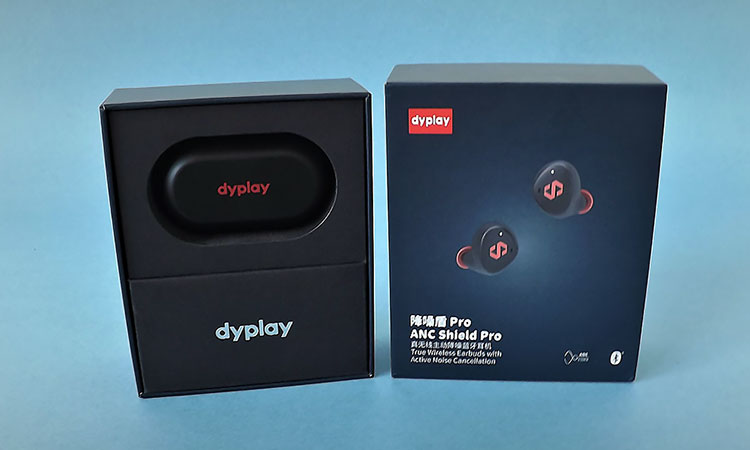The dyplay ANC Shield Pro is a True Wireless System featuring ANC, BT5.0, a 9.2mm single dynamic driver, and up to 32 hours of battery life. It is priced at $89.99.
Disclaimer: The dyplay ANC Shield Pro sent to us for this review is a sample in exchange for our honest opinion. We thank dyplay for giving us this opportunity.
To read more about TWS products we have reviewed on Headfonics click here.
Note, this review follows our new scoring guidelines for 2020 which you can read up on here.
Product Introduction
Dyplay is a company that was started in January of 2015 and in this short time, Dyplay managed to develop more than a few TWS models along with some full-sized headphones. Wireless audio is their thing and we received for review their ANC Shield Pro which is a TWS model with ANC. The Dyplay ANC Shield Pro is their top tier TWS model up to date.
The Dyplay ANC Shield Pro seems to have a lot of technology not found in other TWS models in their price range. The Dyplay ANC Shield Pro comes in two colors. Black and white and are on the Dyplay website for 89.99.
Tech Inside
Dyplay seems to have gone with a different chipset from the normal QCCs and such and instead used a newly developed Mediatek Airoha AB155X. This chip is a newcomer to the TWS industry. Airoha is a subsidiary of Mediatek.
If you look up that number on the Mediatek website you might not find it. That is because it is under MT2811. This chip is also being used in one of the Sony TWS models which costs almost 3 times what the Dyplay model cost.
The Features list is long on this chip and would probably take chapters and not paragraphs and is in actuality a 3 chip package. It works over Bluetooth 5.0.
A built-in ARM Cortex M4 running at 156mhz. Support for 24bit 192bit HD audio. Tensilica Audio engine DSP at 312mhz. Multiband programmable EQ with dynamic range control just to name some of the features. That is just a preview of the feature set of the AB155X chipset used in the Dyplay ANC Shield Pro.
Codec Support
Dyplay does not mention codec support on their website. They only list in their manual Bluetooth agreements. They are HFP, A2DP, HSP, SPP, and AVRCP. I could only find the 2 codecs supported on the Dyplay ANC Shield Pro box and those 2 are SBC and AAC. I was able to verify these 2 but I was not able to verify any other codec support.
This codec support will keep you at under 324kbps and explains why all sources no matter what the quality always tends to have the same consistent sound quality in this set.
Dual ANC
The Dyplay ANC Shield Pro has feedforward and feedback ANC with transparency mode. The use of two microphones inside each earbud gives the ANC Shield Pro ears to hear the noise around you to then produce an out of phase sound to cancel out the original sound.
But it can also amplify the sound around your immediate area if you choose, mostly in the vocal frequencies to give you better hearing capabilities and to not completely isolate you. The noise-canceling works on noise and this set also has echo-cancellation technology for phone use.
The dyplay ANC Shield Pro active noise canceling is rated to be capable of 28 decibels of noise reduction. This amount is not much compared to passive noise reduction which on average can be just as high.
Driver
The dyplay ANC Shield Pro uses a single 9.2mm dynamic drive with a custom peek and PU composite diaphragm. No other listed specifications were available either on the Dyplay website or vendor websites. It seems like a quality driver with a decently wide frequency response and good bidirectional extension.
Many IEMs and TWS models use a 9.2mm driver and since this is specified as a custom driver then specifications will remain unknown at this time until Dyplay releases more information. Perhaps there is a secret sauce involved.
Dual Master Design
Dual master design means each earbud works independently from the other. This is best for people who like to use one earbud at a time.
But there is one more benefit to this system. Since each earbud pairs independently you do not have the old master and slave system where one earbud was given the task of sending a signal to the other earbud.
In older systems, the master earbud would always discharge its battery first because of the extra task given. So in theory with the dual master design, both earbuds should get a more even battery life.
Design
The Dyplay ANC Shield Pro earbuds seem to be made of the same material as the portable charging case. The material is plastic but seems good in quality. They are rather chunky in size but are very light in weight and are very comfortable.
Each earbud has a white led to show when it is in charging mode within the case and blinks when they are in pairing mode.
The one thing I dislike is the irregular flange system which does not allow the use of common foam tips or other aftermarket flanges. But there is some redemption because Dyplay also includes short foam flanges.
Dyplay claims each earbud can give you up to 6 hours of playtime which is lots of time but it all depends if you use the ANC feature and if you do, you will probably get less. I got about 4 to 5 hours with ANC off.
Touch Controls
The dyplay ANC Shield Pro is a touch control based TWS. The usual controls are all available including volume, pause, and play, next and previous track and there is even a voice command function. They do work effectively and barely gave issues. They responded as they should most of the time.
Charging Case
The Dyplay ANC Shield Pro is a typical TWS model and the portable charging case is the usual flip top made of plastic with a USB-C charging port. There is no mention of wireless charging. The earbuds charge within the case and go in the proper left and right orientation which is always a plus. Gold plated contacts are used on the portable charging case and the earbuds also.
Four white LEDs upfront show charging levels. Each LED flashes individually when charging the case but when it is charging the earbuds, all the LEDs blink simultaneously and according to the amount of charge available in the case.
The internal 360mah battery holds up to 32 hours of playtime charge for the two earbuds.
Packaging & Accessories
Besides the portable charging case and the earbuds, you get a few extra goodies inside the dyplay ANC Shield Pro box. Inside, you will find a USB-C charging wire, an instruction manual in English and Chinese, a warranty card, a certificate of quality, and an ear placement instruction illustration chart.
The rest of the package contains 2 types of flanges. There are 3 sets of orange rubber flanges and another 3 which are short sticky foam flanges. Each type is composed of small, medium, and large sizes. I like the foam flanges the best.
Sound Impressions
I was pretty surprised to find an uncommon TWS sound signature because the fact is that the dyplay ANC Shield Pro sounds pretty flat compared to others but not totally. There is still a slight V-shaped signature but not as exaggerated as other similar models.
You get a heavy bass presence but not an exaggerated amount compared to other TWS models. The midrange is neutral and a few decibels pushed back with the treble at almost the same level as the bass in volume.
The tone generator test showed panning to the right at 7khz but not much else. These can extend lower than 20hz in bass response and can also climb in high-frequency response with the absence of noise past 15khz.
The dyplay ANC Shield Pro has a monotone character in tonality and tends to sound the same regardless of source. I would describe the overall sound as nondramatic with a general soft character.
Bass
The bass is slightly elevated and a tad elevated from neutral. The bottom end extension is okay. There is a drop off after 25hz and it drops rather quickly. Most of the bass elevation is around the 60 to 120hz area.
There is not much bleed into the midrange which is a good thing because the elevation does not go too high in frequency. Just a small amount of impactfulness, with an average amount of speed and some overhang, is heard.
Midrange
Dyplay decided to go with different tuning from other TWS but there is still a slight V-shape present with a midrange still takes a back seat here as in other sets.
The recessed properties of the midrange keep them at bay making them pretty smooth, nonintensive and have a never hurt your ears type of sound. The tone and timbre in the midrange are decent with just a hint of loss in detail but the dyplay ANC Shield Pro overall still has good clarity.
Treble
I did the tone generator test on the Dyplay ANC Shield Pro and these were one of the few TWS I tried that can audibly hit notes above 15khz with no horrendous noise levels.
These have fairly crisp highs. You get some sparkle and air. They can manage some complexity but are not the best at speedy resolution. The high frequencies take well to equalization and unlike other TWS models tested, do not distort or introduce noise into the audio and subtly take the effects without breakup.
Imaging and Separation
Most of the soundstage is upfront and there is not much width. The width is narrow and depth is average. There is also a small amount of height. Yosi Horikawa’s letter demonstrated that these can place sound anywhere left to right with precision. The 2 drivers seem to be well-matched with very little audible deviation.
Wireless Performance
The Dyplay ANC Shield Pro has been one of the easiest TWS models to pair initially and especially once the initial pairing is done. They connect easily with no drama. I paired these with 4 different devices and each gave me the same result.
The reception is also very good. I got 37 feet in a straight line, which is better than specified, but lost the reception around bends and corners. The average TWS gets around 30 feet so this one does well in this area.
Some will desire a touch more volume and I often desired more as well. These seem to have a volume cap of about 90 decibels. Most TWS models do this to protect your hearing and that is appreciated. But I think an extra 5 decibels would not hurt.
I obtained better quality sound or closer to a flat audiophile-like sound by simply lowering bass frequencies perhaps a subtle 3 or 4 decibels starting at around 150hz and increasing the cut to said amounts gradually reaching the lower portions of the frequencies. You could also raise treble frequencies with good results if you want a brighter sound signature.
Selective Comparison
Soundpeats Truengine 2
Technical
The Soundpeats Truengine 2 was reviewed a few months ago and was not a bad set in my opinion and since they run about 80 dollars they make a good competitor minus the ANC which you get from the Dyplay for 10 more dollars.
Is the ANC worth the extra money? I would say so if you need it. The Dyplay ANC Shield Pro noise reduction is very subtle so if you frequent a very noisy area then you will probably need a better ANC system. Passively they do well enough.
So It boils down to sound quality, comfort, and overall sound quality. Comfort? I would probably give it to the Dyplay but the Soundpeats take aftermarket flanges and that might tilt the scale. Battery life is about the same if you use the Dyplay with ANC off.
Tuning
Sound quality-wise, the Soundpeats have better highs even though there is some noise present after 12k. I think that is because the Soundpeats have a dedicated driver for the highs. However, the Soundpeats have over a 20 decibels boost in the bass over flat and there is lots of bleed into the midrange.
The midrange and bass are better on the Dyplay with better clarity and definition. Perhaps the Sounpeats have more midrange presence but the quality suffers from the bass bleeding into the midrange area.
Our Verdict
The Dyplay ANC Shield Pro was a pleasant surprise and a change from the usual ultra bass-heavy TWS models. It also offers features like ANC with good comfort for a very low price.
Any cons? Perhaps the unusual flange system but that is somewhat redeemed by Dyplay by including some foam tips and giving the purchaser some variety of options in that area. Perhaps a few more decibels of volume also but I personally do not want to lose my hearing and is better to be safer than sorry.
So a roundup of the positive aspects of the Dyplay ANC Shield Pro would be a reasonably priced TWS with a soft-toned sound signature that is non-fatiguing, with decent battery life and features like feedback and feedforward ANC that works over Bluetooth 5.0 with very good range and reception.
In a vast market of TWS competition, these stand out by their different audio tuning and feature set for a price that will not leave a void in your bank account.
Dyplay ANC Shield Pro Specifications
- Bluetooth version: 5.0
- Bluetooth range: 10 meters
- Decoder: AAC and SBC
- Charging type: Type C
- Working time: 6hrs single time, ANC on 32 hours total duration ANC off
- Charging time: 2 hours earbuds and charging case

